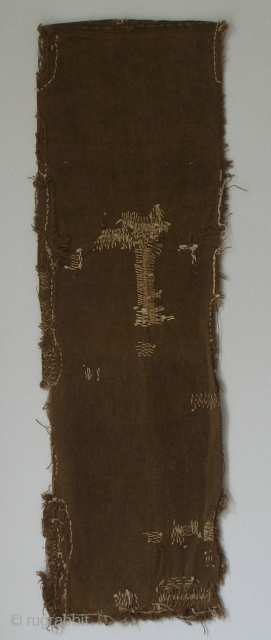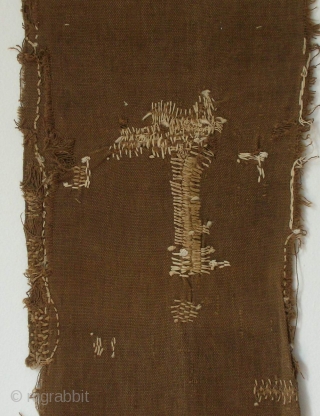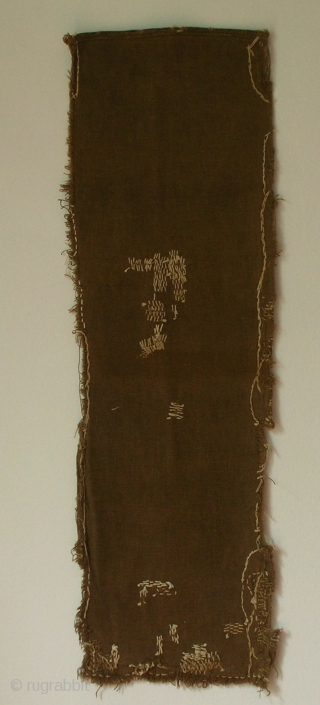Back
Sakabukuro, Japan, early Showa (c.1930), 75x24cm.
Prior to Japan's industrialization, cotton bags permeated with persimmon tannin (kaki shibu) were used in the production of sake. Crude sake, or sake lees, filled this sakabukuro (sake bag/pocket), and under pressure, filtered sake was forced out. Used countless times, these hand-sewn bags required mending, and the eccentric stitches and patching on this particular piece are evidence of its hard life. Sakabukuro, especially the heavily mended variety, are extremely collectible textiles in Japan and abroad. This is a beautiful and heavily textured sakabukuro that probably dates to the time before the Second World War or so. Note the unfinished, ragged edges and the lovely crude white cotton stitching and mending which make the piece the attractive thing it is. Unusual, beautiful and desirable.
price:
SOLD
- Home
- Antique Rugs by Region
- Category
- Profiles
- Post Items Free
- Albums
- Benaki Museum of Islamic Art
- Budapest: Ottoman Carpets
- Gulbenkian Museum
- Islamic Carpets. Brooklyn
- Islamic Textiles. Brooklyn
- Konya Museum: Rugs
- MKG, Hamburg
- MMA: Caucasian Carpets
- MMA: Mamluk Carpets
- MMA: Mughal Indian Carpets
- MMA: Ottoman Carpets
- MMA: Safavid Persian Carpets
- MMA: Turkmen Rugs
- McCoy Jones Kilims
- Ottoman textiles. Met
- Philadelphia Museum
- Rugs and Carpets: Berlin
- Seljuqs at the Met
- TIEM, Istanbul: Carpets
- V&A: Classical Carpets
- Vakiflar Carpets: Istanbul
- Baluch Rugs: Indianapolis
- Gallery Exhibitions
- Jaf an Exhibition
- Alberto Levi Gallery
- Andean Textile
- Christie's London: 2016
- Francesca Galloway
- HALI at 40
- ICOC Washington, DC 2018
- Jajims of the Shahsavan
- London Islamic Week April, 2018
- Mongolian Felts
- Navajo Rugs: JB Moore
- Persian Piled Weavings
- SF Tribal & Textile Art Show 2020
- SF Tribal 2019
- Sotheby's: C. Alexander
- Turkish Prayer Rugs
- Turkmen Main Carpets ICOC 2007









